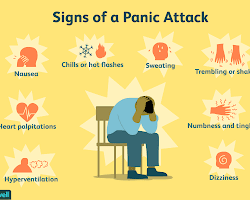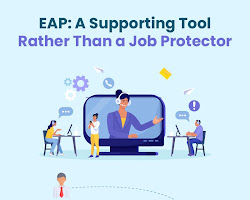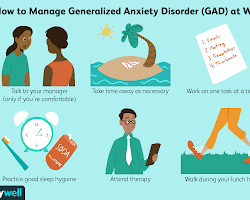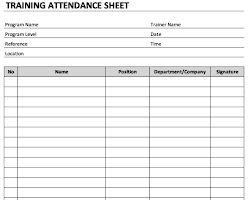In today’s fast-paced and demanding work environment, workplace anxiety has become a prevalent issue affecting employees’ well-being and organizational productivity. This article delves into the various strategies that employers and managers can implement to effectively manage workplace anxiety while fostering a supportive and thriving workplace.
Table of Contents
1. Introduction
In an era defined by constant connectivity and high-performance expectations, workplace anxiety has emerged as a significant concern. Employees across various industries grapple with the pressures of deadlines, expectations, and the fear of falling short. As a result, organizations must prioritize strategies that not only address workplace anxiety but also create an environment that nurtures employees’ mental health.
2. Understanding Workplace Anxiety
Workplace anxiety is a psychological response that arises from the apprehension of work-related situations. It encompasses feelings of stress, unease, and worry about performance, interactions, and the overall work environment. Understanding the factors contributing to workplace anxiety is crucial for implementing effective management strategies.
 Opens in a new window
Opens in a new window www.verywellmind.com
www.verywellmind.com
3. Impact on Employees and Organizations
Unmanaged workplace anxiety can have far-reaching consequences. From an individual standpoint, it can lead to decreased job satisfaction, burnout, and even physical health issues. On an organizational level, anxiety can undermine teamwork, innovation, and productivity. Identifying and addressing workplace anxiety can lead to a healthier work culture and enhanced performance.
 Opens in a new window
Opens in a new window www.mentimeter.com
www.mentimeter.com
4. Creating a Supportive Work Environment
Creating a conducive work environment is foundational to managing workplace anxiety.
- Encourage Open Communication: Establishing channels for employees to express concerns, doubts, and feedback without fear of retribution fosters a culture of openness and trust.
- Promote Inclusivity: Embrace diversity and ensure that all employees feel valued and respected, reducing feelings of isolation that can contribute to anxiety.
- Flexible Work Arrangements: Offering flexible schedules or remote work options can help employees manage their work-life balance and reduce anxiety.
 Opens in a new window
Opens in a new window hrnews.co.uk
hrnews.co.uk
5. Effective Communication
Clear and empathetic communication is paramount in alleviating workplace anxiety.
- Regular Feedback: Provide consistent feedback on performance, highlighting strengths and areas for improvement to reduce uncertainty.
- Transparency: Openly share company updates and changes, ensuring employees are informed and reducing anxiety stemming from the unknown.
- Active Listening: Managers should actively listen to employees’ concerns and address them appropriately, demonstrating empathy and support.
 Opens in a new window
Opens in a new window employee-performance.com
employee-performance.com
6. Setting Clear Expectations
Clear expectations set the foundation for anxiety-free work environments.
- Clearly Define Roles and Responsibilities: Unclear job roles can lead to anxiety about performance. Clearly outline expectations for each role to alleviate uncertainty.
- Realistic Goal-Setting: Set achievable goals that challenge employees without overwhelming them, fostering a sense of accomplishment and reducing anxiety.
 Opens in a new window
Opens in a new window www.indeed.com
www.indeed.com
7. Promoting Work-Life Balance
A balanced life contributes to reduced workplace anxiety.
- Encourage Time Off: Promote the use of vacation days and breaks to prevent burnout and allow employees to recharge.
- Set Boundaries: Respect employees’ off-work hours by limiting after-hours communications to urgent matters only.
 Opens in a new window
Opens in a new window www.freepik.com
www.freepik.com
8. Encouraging Stress-Reduction Activities
Stress-reduction activities can effectively mitigate workplace anxiety.
- Wellness Programs: Offer wellness programs that include yoga, meditation, or exercise classes to help employees manage stress.
- Designated Break Areas: Create spaces where employees can unwind and recharge during their breaks.
 Opens in a new window
Opens in a new window www.freepik.com
www.freepik.com
9. Offering Professional Development
Investing in employees’ growth can boost confidence and reduce anxiety.
- Skill Enhancement: Provide opportunities for skill development, ensuring employees feel equipped to handle their tasks.
- Career Pathing: Offer guidance on potential career paths within the organization, giving employees a sense of direction and purpose.
10. Implementing Employee Assistance Programs
Employee assistance programs provide essential resources for managing anxiety.
- Counseling Services: Offer confidential counseling services to employees struggling with anxiety or stress.
- Workshops and Seminars: Conduct workshops on stress management and mental well-being to equip employees with coping strategies.
 Opens in a new window
Opens in a new windowwww.truworthwellness.com
11. Managerial Training for Anxiety Management
Managers play a pivotal role in managing workplace anxiety.
- Empathy Training: Equip managers with training to understand and address employees’ emotional needs.
- Conflict Resolution Skills: Provide tools for resolving conflicts, reducing potential stressors.
 Opens in a new window
Opens in a new window www.shrm.org
www.shrm.org
12. Recognizing Early Signs of Anxiety
Early detection can prevent workplace anxiety from escalating.
- Behavioral Changes: Train managers to recognize changes in behavior that might indicate heightened anxiety in employees.
- Offer Support: Approach employees displaying signs of anxiety with care, offering resources and guidance.
13. Open Door Policy and Confidentiality
An open door policy fosters trust and reduces anxiety.
- Accessible Management: Ensure that employees can approach managers with concerns or ideas at any time.
- Confidentiality: Assure employees that their discussions will be kept confidential, encouraging openness.
14. Fostering a Culture of Psychological Safety
A psychologically safe environment is a powerful antidote to workplace anxiety.
- Non-Punitive Approach to Mistakes: Encourage learning from mistakes rather than fostering a culture of blame.
- Encourage Risk-Taking: Celebrate innovative efforts, even if they result in failures, promoting a sense of security in trying new approaches.
Additional strategies for managing workplace anxiety:
- Self-care: Taking care of your physical and mental health is essential for managing workplace anxiety. Make sure to get enough sleep, eat healthy foods, and exercise regularly. You may also find it helpful to practice relaxation techniques such as yoga or meditation.
- Seek professional help: If you are struggling to manage your workplace anxiety on your own, consider seeking professional help from a therapist or counselor. They can provide you with tools and strategies to manage your anxiety and improve your overall well-being.
- Talk to someone you trust: Talking to a friend, family member, or therapist can help you to feel less alone and to develop coping mechanisms for dealing with your anxiety.
- Set realistic goals: Avoid setting yourself up for failure by setting unrealistic goals. Break down large tasks into smaller, more manageable ones.
- Take breaks: When you start to feel overwhelmed, take a break to step away from your work and do something you enjoy. This could be taking a walk, listening to music, or reading a book.
- Reward yourself: When you achieve a goal, reward yourself with something you enjoy. This will help you to stay motivated and on track.
Managing workplace anxiety can be challenging, but it is possible. By following these strategies, you can create a more supportive and anxiety-free work environment for yourself and your colleagues.
“Success is not final; failure is not fatal: It is the courage to continue that counts.”
Winston Churchill
15. Conclusion
In a world where workplace stressors abound, implementing effective strategies to manage workplace anxiety is not just a choice—it’s a necessity. By fostering a supportive work environment, encouraging open communication, and providing resources for stress reduction, organizations can ensure the well-being of their employees while bolstering productivity. Remember, a healthy workplace is one where employees thrive, not just survive, amidst the challenges.
Managing workplace anxiety requires a multi-faceted approach, combining empathetic leadership, proactive policies, and a commitment to creating an environment where employees’ mental health is valued. By implementing these strategies, organizations can set the stage for a more resilient, engaged, and successful workforce.
Read more articles







